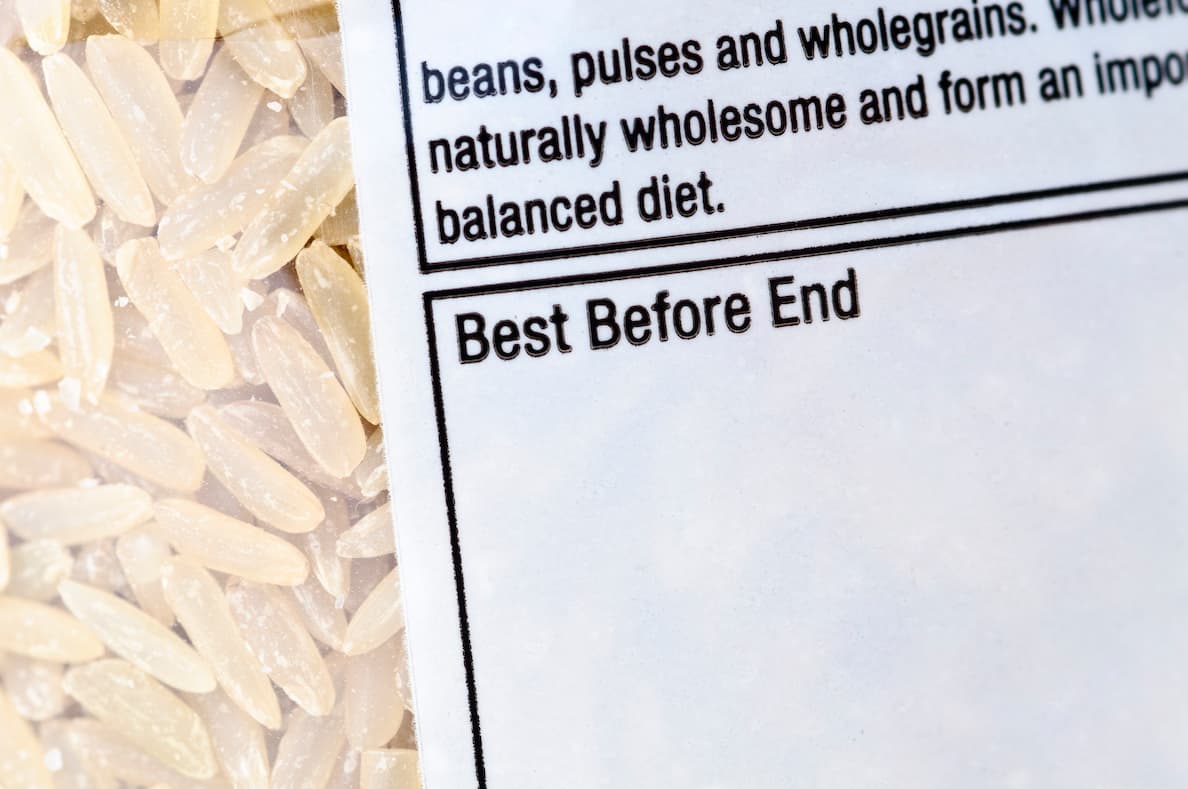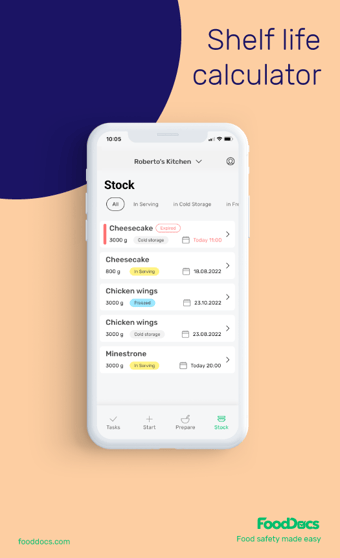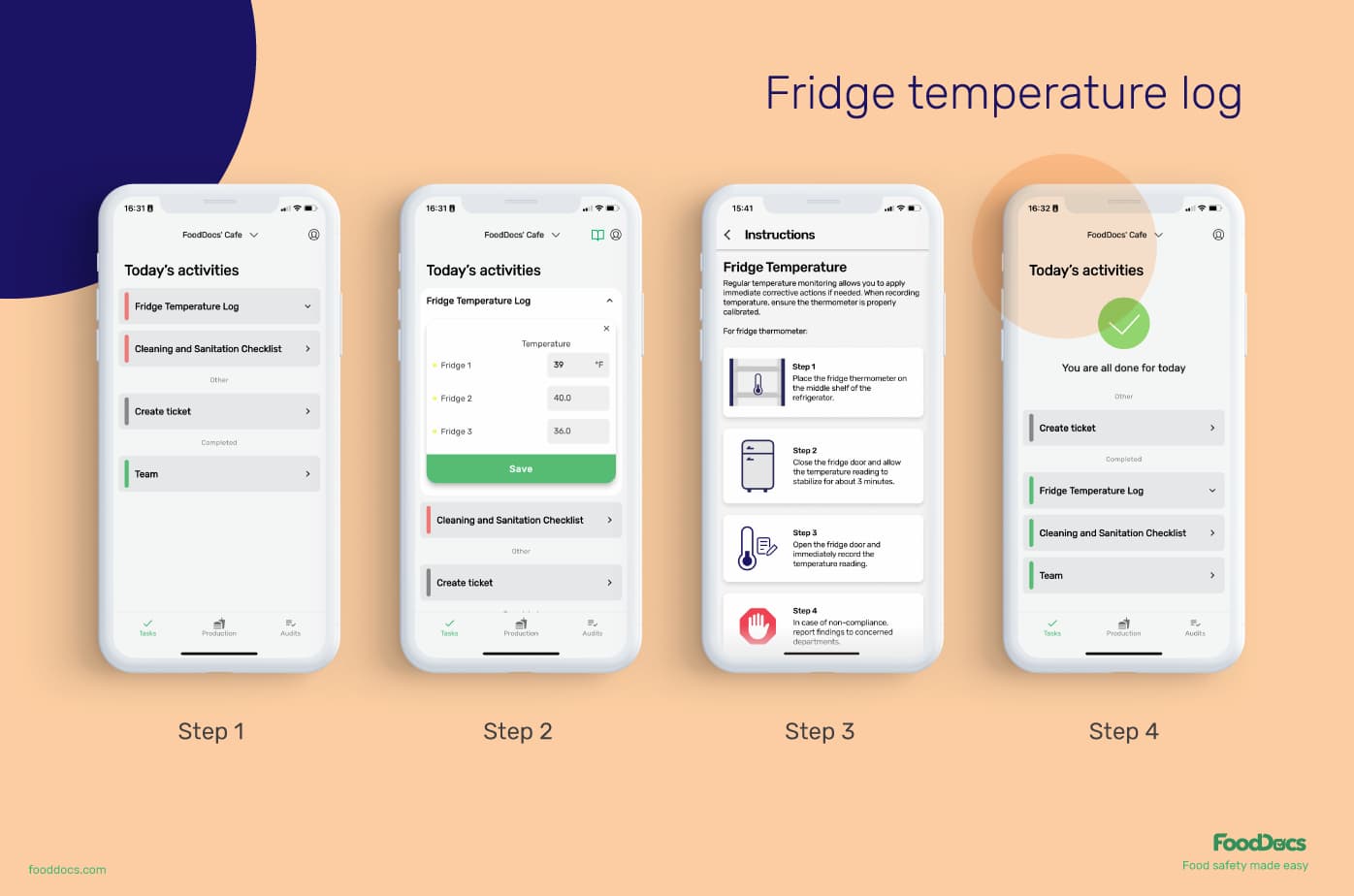Why Is Food Safety Important In Healthcare? Healthcare Leaders Guide
Learn challenges healthcare foodservice teams face today and key food safety practices to protect vulnerable patients. Get a free healthcare leader...
The "use by" date marking is used to indicate the last date that a food product can be safely used or consumed.
No one would be surprised if we told you that you are not the only one who gets confused with food shelf-life labels and their meaning. Date markings on food products can sometimes be confusing, and the lack of knowledge about their significance may be harmful to food businesses.
Ignoring the use by dates may lead to problems, including causing foodborne illness or food poisoning in customers. Food handlers must learn what a use-by date label is as part of their approach to food safety.
Key takeaways
Does the label indicate freshness or safety? Date-marking foods can mean different things depending on the terminologies used to indicate the dates. Failure to understand the difference between terms can lead to incorrect food disposal and profit loss.
The term Use By Date is a type of date-marking that indicates the last recommended date that a food product can be consumed at its peak safety. The meaning of this term may vary depending on the origin of the product.
The U.K. food industry categorizes it as a food safety matter. The Food Standards Agency (FSA) notes that the use by date is the most important date label to remember and advises against consuming foods past this date label.
The agency also clearly states that any food labelled with the use by-date format must not be consumed after the indicated date, even if it looks fine. The UK food safety agency advises using the use by date labelling strategy on high-risk products, such as meats, dairy products, and ready-to-eat salads.

Foods past their use by date may be compromised in terms of food safety. The decision whether the food is safe to consume past the indicated use by date depends on many factors.
The U.K. food safety industry has a different approach to this matter. The FSA strictly discourages food handlers from using and selling foods past their use by dates. Consuming or using products past their use by date can cause severe foodborne illnesses.
This food safety guideline holds through even if the food product smells or looks okay. The food safety agency assures food handlers that the product is safe for use until the use by date, but not after.
The Food Safety and Hygiene Regulations 2013 in England outlines rules on how selling foods past their use by dates is a criminal offence.
Read more about food safety rules and tips for properly handling foods.
Food safety agencies in the U.S., such as the Food and Drug Administration (FDA), identify the date-marking term "use by" as an indication of acceptable quality, except when used in infant formula. This label shows the last recommended date on which the product is at its peak product quality and provides the nutrients as declared in the packaging.
Foods past the declared use by date marking are generally considered to be safe for consumption for an extended period in the U.S. The only exception to the given advice is when the label "use by" is used on infant formula products. In this case, the use by date identifies the estimated last date that the formula will provide the nutrients and safety as described.
United States federal food safety agencies advise food handlers to perform the sniff test and visual observation to decide on the suitability of the food for consumption. In some cases, even high-risk foods past their use by dates can be consumed if they are handled properly and stored correctly.
Spoiled foods will produce an unpleasant smell, discolouration, and other changes on the surface of the food. These signs will tell food handlers that the food is no longer safe for consumption.
Although regulations in the U.K. and the U.S. on date labelling vary, both countries agree that use by date is a term used for high-risk foods. The use by date labelling method often depends on the country's dominant date format.
In the U.K., the use by-date format is written as day-month-year.
E.g., Use by 15 December 2023, or Use by 15-12-2023
On the other hand, the U.S. food industry may write the use by date format using month-day-year.
E.g., Use by December 15 2023, or Use by 12-15-2023
Use by dates can be written in numbers or words, depending on the discretion of the food manufacturer.
Uncooked foods past the use by date are advised to be not consumed and then disposed of. The risk of food poisoning or making people sick becomes significantly high once the food gets past its use by date.
If the food product was stored and held correctly before reaching the use by date, food handlers could cook the product on the indicated use by date. After cooking, the food must be refrigerated and consistently monitored to ensure safety. These food products must then either be consumed within 48 hours or frozen and properly labelled to maintain food safety.
Food companies producing or selling prepackaged foods are required to indicate a date marking, such as the use by date or the minimum durability time, on their products. This food safety law aims to guide food handlers and end users on the maximum allowable time that the food can be used or consumed.
The use by date marking is commonly used for high-risk food products that are fully or partially packed and sold to consumers.
Products that are required to have use by date label include the following:
The declared use by dates on food products must be scientifically backed by the manufacturer's own research on the estimated shelf-life of the product.
The U.K. food safety law also provides a list of food products that do not require "use by" or "best before" dates, given that a lot number is indicated. Some of these raw materials and common food items include:
The use by dates are significant information for food handlers to maximize the potential use of their raw materials without compromising food safety. This information must be closely monitored by food handlers to avoid generating unnecessary food waste from spoiled ingredients.
In addition, monitoring the storage condition of food products labelled with "use by" date marks is also a must. The proper storage conditions will ensure that the product can last up to the indicated date label.
Date marking refers to the process of labelling foods with an estimated end time indicating the last date of peak safety or quality of food products. Different terms are used for dates on packages.
Some of the most common phrases used for date-marking worldwide include:
The suitability of the date-marking term depends on the type of food being processed and the food safety regulations established in a location. Learn more about these date-marking terms from this article.
The U.K. food safety regulations require manufacturers to label foods with either a best-before or use by date. This regulation is under the Food Information to Consumers (FIC) and is for guiding consumers on the maximum shelf-life of a food product and highlighting the importance of food safety.
Comprehensive food safety management systems include possibilities for regular monitoring of product shelf-life or the date markings on foods.
Date-marking labels can sometimes be confusing for food handlers. Confusion may often lead to unnecessarily throwing away foods or contributing to causing foodborne illnesses.
Food handlers must familiarize themselves with the difference between use by and best before and other date-marking labels.
The term "Best by" is used to refer to the date of minimum durability of the product and is used as an indicator of the ideal quality. Best by can also be presented as "Best before end (BBE)" or "best if used by."
Food businesses are only allowed to use the date-marking label if a documented risk assessment was performed on the shelf-life of the product. The assessment aims to ensure that the product will not cause any human health risk when consumers eat the product after the indicated best-by date.
Foods labelled with "best by" dates can still be consumed after the indicated time, provided that the product is not presenting any questionable characteristics.
On the other hand, "Use by" is a term used to indicate the last safe date to consume a product. As previously mentioned, this date-marking label is used on high-risk foods or those categorized as Time/Temperature Control for Safety food products.
Consuming or selling foods in the UK past their use by dates is a criminal offence as it can cause food safety issues.

Use our Food Safety Management System to help your team calculate shelf-life dates on your products and intuitively monitor them. Automatically generated monitoring logs and a smart notification system can significantly help you achieve food safety compliance.
Use by dates indicated on food products by manufacturers are tested and based on specific conditions. Manufacturers also mention the specific conditions required to meet the use by dates on the food product.
Food handlers should follow these date-marking tips to maximize food potential:
Use tools such as a Proper Food Storage Chart or Canned Food Expiration Dates Chart to help food handlers determine the proper conditions for your food products and their maximum shelf-life. You can improve accountability among all food handlers by providing useful food safety tools to guide them in handling your materials.

Use FoodDocs' digital solution to intuitively monitor use by dates and even storage conditions with less effort.

With our Food Safety Management System, you can get the following features and benefits for monitoring use by dates:


In addition to features for monitoring use by dates, this digital Food Safety Management System can help managers save time and optimize management procedures:
Our intuitive digital solution is powered by artificial intelligence and a machine learning program. These solutions allow your food business to quickly adapt to the ever-changing food safety regulations and customer demands. Customize all monitoring logs and checklists to fit your operations with just a few clicks.
Maintain compliance with food safety regulations and protect consumers with FoodDocs' digital solutions. Experience how our system can help you optimize operations and maximize profits by using our free 14-day trial now.
Do you need more information to understand use by dates and other date-marking on food labels? Below are some of the most frequently asked questions about this topic and our quick answers.
Products that are considered high-risk or perishable foods must be labelled with use by dates. This will serve as a guide for food handlers in determining the optimum and allowable time to use food materials as ingredients.
Fresh meat, including pork, beef, and lamb, must be packed and labelled with clear declarations of the 'use by' date in front of the packaging. The label, whether on the front or back of the packaging, must also indicate that the whole or ground meat can be frozen before the indicated 'use by' date.
Include an 'Open life' declaration for products that are packed in a modified atmosphere or vacuum-packed foods.Open-life dates must be accompanied by the farthest possible and safest date for the product after opening the package.
The same rules apply to declaring the use by date on sausages.
Packaging of fresh chicken and poultry products must indicate the use by dates on food labelling. Freezing instructions must also clearly state that the chicken meat can be frozen up to the use by date.
Where applicable, an open-life date must be included together with the use by date.
Fresh fish that is packed individually must have a clear indication of the use by date in front of the packaging. In addition, the packaging must also contain the correct storage conditions to meet the prescribed use by date.
The term "use by" in the UK is a date-marking label used to indicate the maximum time that a food can be safely consumed without causing foodborne illness. On the other hand, "best before" refers to the minimum durability or the time in which a product is at its peak food quality.
Foods past their use by date are advised to be disposed of and not consumed in the U.K. Meanwhile, U.S. food safety agencies do not advise against consuming foods past their use by dates as long as they do not exhibit signs of spoilage. The only exemption to the advice is the case of infant formula.
Learn challenges healthcare foodservice teams face today and key food safety practices to protect vulnerable patients. Get a free healthcare leader...
Learn what Standard Operating Procedures (SOPs) are and how to write effective SOPs that ensure consistency, efficiency, and safety in your...
Boost your retail food safety with essential practices and digital tools to protect customers and your brand. Plus a free Retail Food Safety Leader...